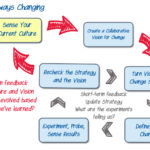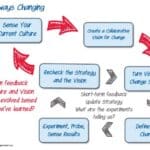It is common in the early stages of Scrum implementation for there to be misunderstandings about what User Stories are for and what makes them useful. A ScrumMaster’s task is to be able to help the Team and Product Owner when they are faced with ineffective User Stories as they go into Sprint Planning. Dramatis […]
Scrum
Scrum by Example – Scrum Anti-Patterns & Unplanned Work Disrupting the Sprint
The Team is in the middle of a Sprint, but the Product Owner has discovered unplanned work and interrupts their flow mid-Sprint to deal with it because it’s now “high-priority.” How should a ScrumMaster deal with this or similar Scrum Anti-Patterns? An anti-pattern is a common response to a recurring problem that is usually ineffective […]
Scrum by Example – Stories for the Working ScrumMaster
What does it take to be a great ScrumMaster? When I was in my early years as a Scrum Trainer, circa 2011, it was noticeable to me that while there was a plethora of content out there explaining the role of the ScrumMaster and what qualities you want in a person for the role, there […]
Creativity for Agile Teams
There are many ways to redefine a work environment to support greater creativity that have been discovered through experience, experimentation, and accident. At the same time, modern neuroscience suggests guidelines for deliberately designing conditions to enhance creativity, using our best understanding of how our brains work, learn, integrate, and create. How do we support, enable, […]
Is There a Best Day to Start and Finish a Sprint?
No, of course not. So when should your Team start and end Sprints? The usual rules of Scrum apply – ask the Team. Run an experiment. There is an instinctive tendency to want to wrap up things at the end of the work week so we can unplug our brains for the weekend, and start […]
$50 Million Phoenix Fix – Avoiding Disaster With Scrum
As most Canadians can tell you, the rollout of the Canadian Government’s Phoenix payroll modernization system has gone disastrously badly. At one stage, there were over 80,000 civil servants who had payment problems, with some even losing their houses over the mess. I’ve seen everything from the contractor (IBM) to a lack of training being […]
Agile Change or Adoption: Sense Your Current Culture
(Continued from Agile Change or Adoption Always Starts with Why: Part 1, Part 2) Sense Your Current Culture To understand the culture you’re attempting to change in your organization, you need to measure (or sense) the current state and then map that state to a model. The model we will use is the Schneider Culture Model.[1] [2] […]
Agile Change or Adoption: the Steps to Go from “Why” to “How”
(Continued from Agile Change or Adoption Always Starts with Why) If you’re going to become an Agile Organization, and you understand that it has to be a collaborative discussion and effort rather than an executive decree, here are the key ingredients to move forward with that decision effectively: Sense Your Current Culture Be mindful of the […]







